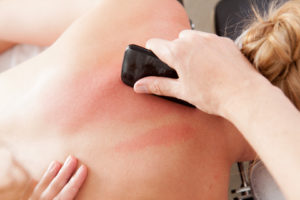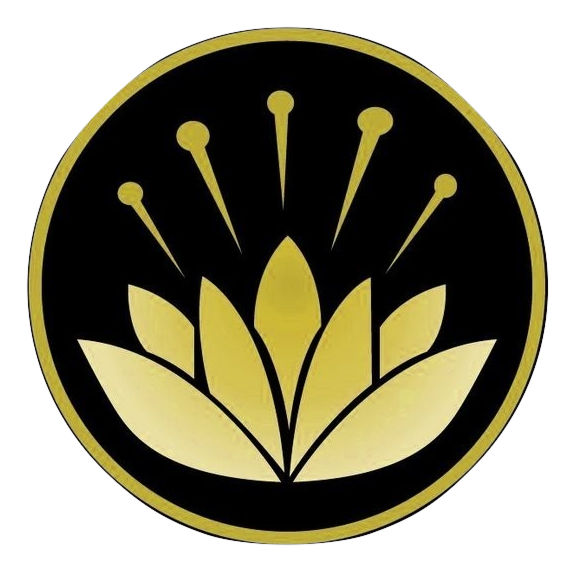
Gua sha is a healing technique that has been used by practitioners of TCM since antiquity. During the procedure, a lubricant, such as massage oil, is applied to the skin over the area intended for treatment and a smooth-edged instrument is used to apply short and/or long strokes over the skin. This is typically done over an area experiencing pain and results in temporary patches of redness or bruising.
Pain, both acute and chronic, is the most common indication for gua sha. According to TCM theory, pain is often the result of stagnation of blood or qi in the areas of discomfort. Gua sha has the ability to disperse stagnation and promote the flow of both qi and blood to the area experiencing pain, thereby offering relief.
Gua sha may also be employed to address conditions such as asthma, bronchitis, colds, flu, fever, heatstroke, fibromyalgia, strains, sprains, as well as muscle spasms.
Several theories have been proposed to explain how gua sha therapy might work. One suggests that use of the procedure results in an increase of blood flow (microcirculation) to the soft tissues, another, that it potentially stimulates the body’s natural pain-relieving opioid systems, and a third, that it may block pain sensing pathways.
Researchers have used various techniques, including Doppler imaging, to show that microcirculation is, in fact, increased through the use of the procedure, and that this effect appears to be associated with a reduction in the perception of pain both locally and at distal sites.1
In studies involving mice, gua sha was shown to influence the enzyme (Heme Oxygenase-1)2 which is known to serve a protective antioxidant role in cells.
A particularly compelling case study suggested that gua sha may have a protective effect on the liver as the technique was able to decrease the inflammatory markers of a patient with liver injury due to Hepatitis B.3
Regarding its analgesic effects, a study published in a 2011 edition of Pain Medicine4 provided clinical evidence that gua sha was able to decrease the pain experienced by chronic sufferers of neck pain, noting that “neck pain severity after 1 week improved significantly better in the gua sha group compared with the control group (heat therapy).”
_________________________________________________________________
Sources:
1 Nielsen, et al. “The Effect of Gua Sha Treatment on the Microcirculation of Surface Tissue: A Pilot Study in Healthy Subjects” Explore September/October 2007, Vol. 3, No.5
2 Kwong, et al. “Bioluminescence Imaging of Heme Oxygenase-1 Upregulation in the Gua Sha Procedure” Journal of Visualized Experiments 2009; 1-3.
3 Chan, et al. “Guasha-induced Hepatoprotection in Chronic Active Hepatitis B: A Case Study” Clinica Chimica Aca 412 (2011) 1686-1688
4 Braun, et al. “Effectiveness of Traditional Chinese ‘Gua Sha’ Therapy in Patients with Chronic Neck Pain: A Randomized Control Trial” Pain Medicine 2011; 12:362-369






